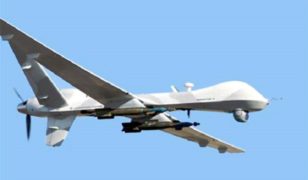MEADS multifunction fire control radar proves capabilities in performance tests

The Medium Extended Air Defense System (MEADS) program has completed a six-week performance test of its 360-degree Multifunction Fire Control Radar (MFCR) at Pratica di Mare Air Base near Rome, Italy, and at MBDA Germany’s air defense center in Freinhausen in the presence of representatives from the German Air Force and guests from MEADS partner nations. This was the first time the MFCR has been operated in Germany.
“The latest test again gives evidence of the maturity of the MEADS development results,” said Siegfried Bücheler, director of Programs and Supply Chain at MBDA Germany and chairman of the Board of Directors at MEADS International. “They form an excellent basis for Germany’s future air defense system. MEADS technologies are designed to fulfill requirements for an advanced tactical air and missile defense system that anticipates future threats. Competing systems would require further development to achieve the advanced MEADS capabilities.”
During the tests, the MEADS MFCR successfully demonstrated several advanced capabilities, many of which are critical for ground-mobile radar systems. Capabilities tested include tracking and canceling jamming signals; searching, cueing and tracking in ground clutter; and successfully classifying target data using kinematic information.
“The MEADS MFCR combines extraordinary capability and cost effectiveness,” said Gregory Kee, general manager of the NATO MEADS Management Agency. “It can detect and track advanced threats with 360-degree coverage, is highly mobile and can be transported on C-130 aircraft.”
MEADS radars are designed to protect troops and assets on today’s 360-degree battlefield, where missile attacks are omnidirectional. Using plug-and-fight capability, the MFCR acts as a node on the MEADS network, and like all other MEADS major end items, can be dynamically added or removed as missions dictate, without shutting down the system.







